Mastering the Art of Grilled Cheese Sandwiches
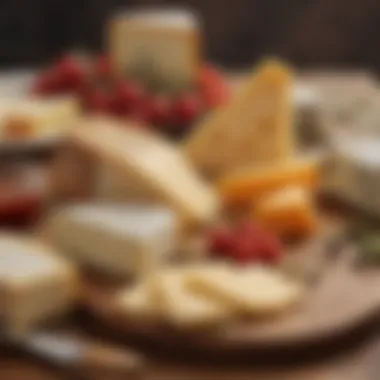
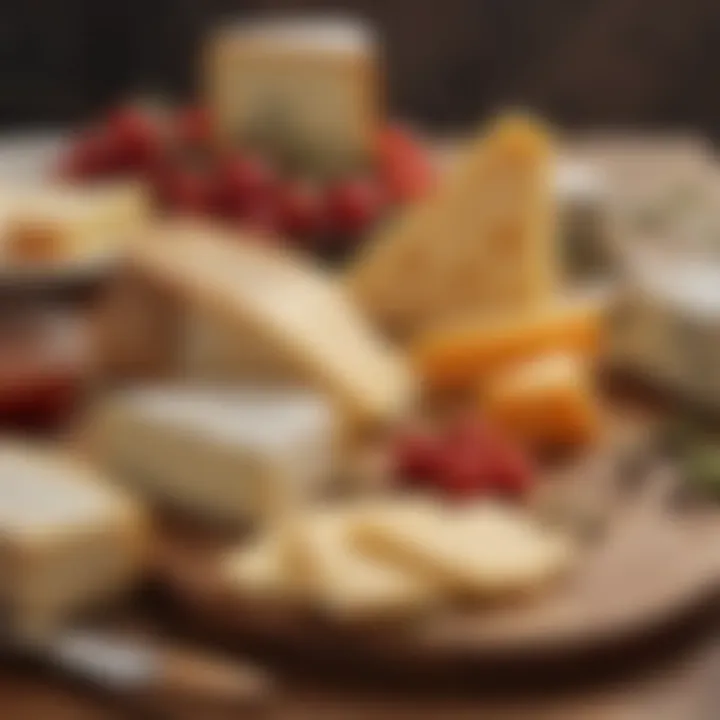
Intro
Grilled cheese sandwiches have a way of reaching into the heart of comfort food, effortlessly rekindling past memories with each crisp bite. Whether you're curled up on the couch after a long day or enjoying lunch in the sun, this savory delight seems to fit every scenario. The process of crafting the perfect grilled cheese goes beyond simply toasting bread and melting cheese; it's a delightful mix of technique, ingredients, and a hint of culinary creativity that turns a humble dish into something quite extraordinary.
In this guide, we will embark on a flavorful journey, unraveling the nuances that make every grilled cheese a memorable experience. From selecting the right bread to experimenting with optional add-ins, we will explore the depths of what it truly means to elevate this classic dish.
This isn’t just for the kitchen novice; seasoned chefs will find joy in rediscovering the beauty of simplicity, as we unearth methods to create gourmet variations that cater to every palate. It's time to dust off those pans and get ready to flip some sandwiches!
"The grilled cheese sandwich is a canvas awaiting your culinary brush. Every element you choose adds your unique flavor to this simple masterpiece."
As we proceed, we'll detail each aspect of our pursuit, offering insights that not only clarify techniques but also celebrate the art of sandwich crafting.
Preface to Grilled Cheese
Grilled cheese sandwiches hold a special place in the hearts of many. They are not just a meal; they evoke memories of childhood, warmth, and comfort. It's a dish that has transcended age and culture, suitable for a quick lunch or an elegant dinner party. This section dives into the essence of grilled cheese, explaining why it deserves its moment in the limelight.
In many ways, the grilled cheese sandwich is a canvas for culinary creativity. From the choice of bread to the melty cheese and possible additions, the options are endless. Here, we not only explore the history but also the various cultural takes on this beloved comfort food.
A Brief History of Grilled Cheese
The journey of the grilled cheese sandwich is as layered as the ingredients it comprises. Originating in the Roman Empire, the concept of bread and cheese being cooked together can be traced back centuries. However, it gained prominence in America during the Great Depression as a cheap and accessible meal. While folks were pinching pennies, a slice of cheese melted between two pieces of bread became a staple.
Fast forward to the 20th century, the invention of sliced bread and processed cheese slices further popularized this dish. In fact, the first documented recipe for a grilled cheese sandwich appeared in a 1920s cookbook, reflecting its growing acceptance in American households.
In its most simple form, grilled cheese is composed of bread and cheese with a bit of fat for cooking, but over the decades, its preparation and presentation have evolved tremendously. Today, from humble beginnings to widespread gourmet offerings, the versatility of the grilled cheese has made it a global phenomenon.
Cultural Variations of Grilled Cheese
Grilled cheese is not solely an American affair. Different countries have interpreted this classic in fascinating ways. In Spain, they have the "tostada," often made with regional cheeses and served with a side of tomato or ham. In Italy, you might stumble upon the "panino," with artisanal cheeses or even fresh vegetables.
Moreover, in Mexico, a twist on this involves using tortillas instead of bread, creating a crispy delight stuffed with ooey-gooey cheese. Each culture brings its unique flavors and local ingredients to this timeless dish, creating a rich tapestry of styles and tastes.
"Grilled cheese sandwiches don’t just fill your stomach; they fill your soul."
In essence, the grilled cheese sandwich serves as a wonderful example of culinary adaptability. Whether it's served simply with a side of pickles or dressed up with gourmet options, this dish continues to evolve while retaining its comforting roots.
Essential Ingredients
When it comes to crafting the ideal grilled cheese sandwich, the lowly ingredients wield an outsize power over the final product. The choice of components not only affects flavor but also texture, appearance, and the overall eating experience. Understanding the essential building blocks is paramount to elevating this beloved comfort food into something extraordinary. A sandwich made with subpar ingredients is likely to be forgettable, while those selected with care and intention can sing on the palate. This section will delve into the various elements you ought to consider when assembling your masterpiece.
Selecting the Right Bread
Sourdough
Sourdough has carved out a niche as a favorite choice for many grilled cheese lovers. Its key characteristic is the tangy flavor profile imparted by the fermentation process, which adds a depth of taste not often found in conventional breads. This potential highlights the unique feature of sourdough: its crusty exterior and soft interior. Sourdough is beneficial for grilled cheese as it not only crisps nicely when grilled but also provides a sturdy frame that can hold up to robust fillings without collapsing under the pressure. However, its strong flavor might not resonate with everyone, making it essential to balance it with milder cheeses or ingredients to prevent overwhelming the palate.
Whole Wheat
Whole wheat bread is another popular contender, prized for its nutty flavor and higher nutritional value compared to white bread. The key characteristic of whole wheat is its fiber content, contributing to a heartier bite and more satisfying chew. It's a solid choice if you are looking for a healthier alternative without sacrificing flavor. The unique feature of whole wheat is its texture; it typically has a more robust crumb. That said, the denser composition might require slightly more care when grilling, as it can take longer to achieve the right melt without burning the outside.
Brioche
For those inclined towards a slightly sweeter, more indulgent grilled cheese experience, brioche might just take the cake. This soft, buttery bread is famous for its rich flavor and fluffy texture, resulting from the high egg and fat content. The benefit here is clear: brioche leads to a pleasantly decadent grilled cheese that feels luxurious. However, the very qualities that make brioche delightful can also pose challenges; its sweetness might clash with certain cheeses or savory ingredients, and it can brown quickly, requiring vigilant attention during cooking.
Choosing Cheeses for Optimal Melting
Cheddar
Cheddar cheese has made a name for itself as the classic choice for grilled cheese sandwiches. Its sharp flavor and superior melting quality make it a standout. The unique feature of cheddar is its versatility; from mild to extra sharp, it can offer different dimensions to your sandwich. Cheddar's natural oiliness when melted creates that gooey, satisfying texture people crave in their grilled cheese. However, care must be taken with the aging of the cheddar, as aged varieties can sometimes become too crumbly for ideal melting.
Gruyère
Turn your attention to Gruyère for a touch of sophistication. Known for its nutty, slightly sweet profile, Gruyère melts beautifully and gives a rich flavor that enhances the sandwich overall. The key characteristic of this Swiss cheese is its creamy texture when melted, providing a delightful mouthfeel. While it’s a beneficial choice for an upscale take on grilled cheese, its relatively higher price point may deter some home cooks from using it regularly.
Fontina
Fontina cheese is another marvelous option, often regarded for its smooth melting properties. With its mild and rich taste, Fontina adds a creamy element that can elevate even the simplest of ingredients. The unique feature of Fontina is its workability; it melds with other flavors seamlessly, making it a prime candidate for fusion-inspired grilled cheese sandwiches. On the downside, too much Fontina can lead to a liquefied mess, so balancing it with firmer cheeses is often advisable for optimal results.
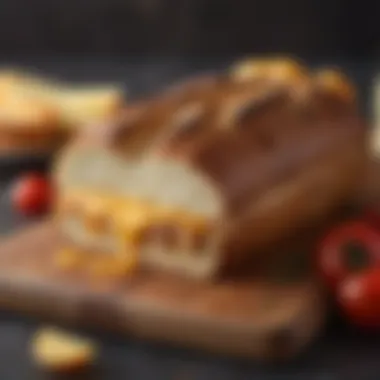
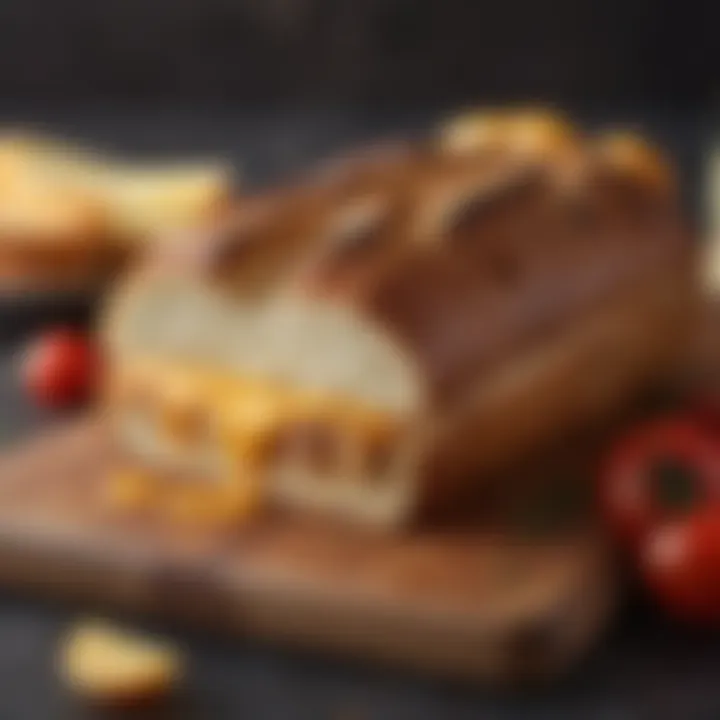
Flavor Enhancements and Additives
Vegetables
Vegetables can introduce freshness and balance to a grilled cheese. Ingredients like tomatoes, spinach, or caramelized onions can provide a burst of flavor and contrasting textures. The key characteristic of adding veggies is their ability to round out the richness of the cheese and bread. For instance, a slice of ripe tomato can uplift the sandwich, although excessive moisture may lead to a soggy outcome. Therefore, strategically choosing and preparing these additions is crucial to maintaining a perfect grilled cheese.
Spices
Spices can be the stealthy heroes of a grilled cheese sandwich. A sprinkle of garlic powder or a dash of red pepper flakes can create an unexpected kick. The unique feature of spices is their ability to transform a familiar dish into something enigmatic without requiring radical changes to the base ingredients. However, too much spice can overwhelm the delicate balance of flavors, so moderation and careful seasoning are key.
Meats
Incorporating meats like crispy bacon or smoked turkey can elevate the grilled cheese from a simple snack to a meal in itself. The key characteristic of meats is their robust, savory quality, which can enhance the overall taste profile. Think about how bacon introduces a smoky crunch that contrasts beautifully with creamy cheeses. Still, adding proteins requires awareness of the total sandwich weight, as too much meat can lead to an unwieldy sandwich that struggles to hold its shape and melt evenly.
Remember: The magic of a grilled cheese lies not just in the sum of its parts but in how well those parts play together. A thoughtful selection of ingredients can turn an ordinary sandwich into a gourmet delight.
Preparation Techniques
When it comes to crafting a truly unforgettable grilled cheese sandwich, the preparation techniques you employ can make or break your creation. This section dives deep into the specifics of different methods, showcasing the merits and nuances that come into play when you’re ready to grill. Mastering these techniques not only elevates the quality of your sandwich but also enhances your skills in the kitchen. Let’s explore the vital aspects of skillet use, grilling methods, and alternative grilling agents that can redefine your grilled cheese experience.
Using a Skillet
A skillet is one of the most traditional ways to prepare a grilled cheese sandwich. Its widespread use boils down to its reliability and ability to distribute heat evenly, allowing for that golden crust we all crave.
Temperature Control
One of the important factors when using a skillet is temperature control. The right temperature can mean the difference between a perfectly toasted exterior and a burnt disaster. Ideally, pre-heating the skillet over medium heat is a sound approach. This characteristic of temperature allows the bread to toast gradually, promoting thorough melting of cheese inside.
However, going too high can result in an uneven cook. Sizzle too hot, and you're left with a charred crust, while the filling remains cold as ice. It’s a balancing act that, when mastered, provides a satisfying crunch with a gooey center every time. The disadvantage? It requires patience and a watchful eye, a small price for a comforting bite.
Timing for Perfect Browning
When it comes to timing, less is often more. Timing for perfect browning is key in achieving that aesthetically pleasing, golden crust. Typically, this may take about three minutes per side, depending on your skillet's heat setting. This method not only ensures a lovely color but also impacts texture. One must keep an eye out for the cheese beginning to ooze towards the margins of the sandwich, as an indicator that it's close to complete.
Getting timing just right not only gives you a savory balance of flavors but also the tactile satisfaction of a crisp bite. However, the downside here is that if you’re multitasking, it’s easy to lose track of time, leading to a less than ideal sandwich in the end.
Grilling Methods
Grilling techniques can bring distinct flavors and sensations to your grilled cheese sandwich, each method offering unique benefits and flair.
Panini Press
A panini press can be a game-changer for those looking to simplify the process of making grilled cheese. The press evenly grills the sandwich from both sides, ensuring even melting of cheese without the need to flip. Many find this method appealing because of the consistent results it yields. The high heat of a panini press also helps to create a delightful texture.
Still, not everyone has this appliance sitting in their kitchen. Those who aren't equipped will miss out on the quick and easy solution this gadget provides. Another point to consider is the lack of traditional skillet fun. Sometimes, you just want the artistry of flipping the sandwich yourself!
Griddle
A griddle is another excellent option, especially when preparing multiple sandwiches at once. Its large surface area lets you toast several sandwiches simultaneously, making it ideal for gatherings. As heat is evenly distributed across its surface, you can achieve consistent browning.
However, griddles require a bit more upkeep in terms of heat management. Too much heat can lead to an overcooked outer layer while leaving the inside less melted than desired. Yet, the magic of a griddle lies in shared experiences over meals with family or friends, a delightful outcome not easily replicated.
Oven
Using the oven can elevate your grilled cheese game to a whole new level, especially for those thick sandwiches bursting with flavor. Baking the sandwiches allows the cheese to evenly melt while toasting the bread, resulting in a uniquely crunchy experience.
The downside, of course, is that it may take longer than other methods. It’s not quite the handheld, on-the-go meal you might want if you’re looking for something quick. Nonetheless, for leisurely afternoons or family gatherings, the oven can produce grilled cheese sandwiches that are nothing short of impressive.
Alternatives to Butter for Grilling
Though butter is the classic choice for grilling, several alternatives can enhance flavors and change nutritional profiles of your grilled cheese.
Olive Oil
Olive oil offers a heart-healthy alternative to butter without sacrificing taste. Drizzling some onto the bread can yield a crispy exterior while imparting a subtle depth of flavor. Its use is particularly beneficial for those avoiding dairy. The unique feature here? Its higher smoke point compared to butter means less chance of burning while grilling.
That said, olive oil might not create the same creamy mouthfeel traditionally associated with butter. Seek a good quality oil to ensure it complements rather than overpowers your sandwich.
Margarine


Margarine is yet another substitute that many reach for. It spreads easily and provides a similar texture to butter, making it a common choice. Notably, margarine’s plant-based composition appeals to vegans or those with lactose intolerance, as it allows for a similar approach to grilling.
However, one must take care, as flavor profiles can vary significantly between brands. Some may impart a different taste that is not desired in a classic grilled cheese.
Mayonnaise
Using mayonnaise for grilling might sound a bit out of left field, but it’s worth a shot. Similar to olive oil, it's spreadable and creates a deliciously rich crust when applied to the bread. The unique characteristic of mayo lies in its ability to brown beautifully while adding creaminess inside.
This method isn't without its flaws, though. Not everyone enjoys the tangy flavor it brings, so this option might require a discerning palate willing to experiment.
"Preparation techniques serve as the scaffold upon which your grilled cheese masterpiece is built. Delve deep into each method to elevate your craft."
The insights shared here serve not only to broaden your understanding but also to inspire a level of creativity in your next grilled cheese venture.
Assembly Process
The assembly process plays a critical role in crafting a perfect grilled cheese sandwich—it's where the culinary magic comes to life. Without the right assembly techniques, even the best ingredients can fail to create that delightful blend of textures and flavors. Good assembly ensures that each bite offers a harmonious balance, not just a random jumble of flavors. The way ingredients are layered and arranged can impact both taste and the overall eating experience.
An important consideration during this process involves the order in which ingredients are added. For example, placing sturdy components like meats or vegetables against the bread can prevent moisture from making the bread soggy, thereby preserving that precious crunch. Besides, thoughtful layering allows for proper melting and distribution of the cheese. This attention to detail can elevate a basic grilled cheese into something exquisite.
"A well-constructed sandwich is a like well-written symphony; it's not just about the individual notes, but the melody they create together."
Given the myriad of ingredient combinations possible, understanding how they interact with each other under heat becomes essential. Each element contributes to the overall flavor profile, which makes the assembly process not only a matter of practicality, but rather an art form.
Layering Ingredients for Balance
When it comes to layering, the key is achieving a delightful balance that enhances the experience of each bite. Start with one slice of bread, then apply a generous layer of cheese that will melt fabulously. A trick is to utilize multiple types of cheese to create depth; perhaps a sharp cheddar paired with a gooey fontina. This offers both taste and texture, as the meltiness of one complements the sharpness of the other.
Follow this with any additional ingredients like vegetables—think ripe tomatoes or sautéed mushrooms—while remembering to consider their water content. Excess moisture can lead to a soggy bottom, so either select drier components or pat them down to absorb excess water. Finally, seal it all with another slice of bread. A good rule of thumb is maintain a solid base of cheese in the middle to hold everything together, ensuring the ingredients meld well when heat is applied.
Cutting Bread - Techniques and Tips
The technique of cutting the bread can often be overlooked but is crucial in ensuring that your sandwich presents well and is easy to handle. For starters, choose your cutting tool wisely; a serrated knife is ideal as it saws through crusts without crushing the soft inside of the bread.
Consider how you cut the bread before it goes into the skillet. Diagonal cuts can offer a larger surface area for the crust and are often seen as more appealing to the eye, while straight cuts provide cleaner edges. Each approach has its merits;
- Diagonal cuts: Often preferred for aesthetic reasons, providing a larger bite and a more familiar presentation.
- Straight cuts: Make it easier to dip into soups, as the edges line up better with the shape of most bowls.
After cutting, it can be helpful to slightly butter the cut sides when grilling. This leads to a deeper golden crust on the outside, which enhances texture and flavor.
The magic of a great grilled cheese lies not only in the ingredients used but also in how they're brought together. Taking the time to master the assembly process will result in a sandwich that is truly unforgettable.
Cooking Techniques
The cooking techniques employed in preparing a grilled cheese sandwich play a pivotal role in transforming a simple meal into an extraordinary culinary experience. They are where science and art meet, balancing flavors, textures, and techniques. Mastering these skills not only boosts your confidence in the kitchen but also elevates the final product, making each bite a delightful explosion of taste and nostalgia.
In this section, we’ll look at the nuances that lead to a perfect sandwich, covering the golden brown finish and the essential timing for melting cheese to creamy perfection. The way you cook your grilled cheese can either lead it to be the star of the meal or an afterthought, so it’s worth paying attention.
Achieving the Golden Brown Finish
The golden brown finish is not just about aesthetics; it is crucial for flavor development. When bread is toasted to a crisp, it forms a Maillard reaction, generating rich, nutty notes that enhance the overall taste. The color should be more than just pleasing to the eye; it should signal to you that the sandwich is ready to elevate your taste buds.
For achieving that enviable finish, consider these factors:
- Type of Pan: A heavy-duty cast iron skillet distributes heat evenly and retains warmth, leading to a uniform toasting.
- Heat Level: Moderation is key. Too high and you risk charring the bread before the cheese has even started to melt. A medium heat lets you take your time while ensuring that neither fabric of your sandwich is sacrificed.
- Fat Choice: The oil or butter you choose also influences the color and flavor. Butter will bring a rich, creamy aspect, while olive oil adds a more robust taste.
Take a moment to watch for that telltale, deep golden hue, a signal that your patienc is about to pay off. It’s the secret handshake in the world of grilled cheese-making.
"The difference between a good grilled cheese and a great one often lies in the patience of the cook."
Melting Cheese - The Right Moment
The point at which you remove your sandwich from the heat is crucial. Melting cheese perfectly is a delicate dance that requires attention and timing. Your goal is to achieve that gooey, melt-in-your-mouth texture without crossing into rubbery territory.
Here are some considerations:
- Know Your Cheese: Each type of cheese behaves differently when heated. A classic cheddar melts beautifully, while mozzarella can turn stringy. Gruyère, with its nutty flavor, requires just the right amount of heat to melt gracefully without separating.
- Pressing Technique: Gently pressing down on the sandwich with a spatula can encourage even melting, ensuring that heat reaches the cheese effectively without risking burnt bread.
- Covering the Pan: If you cover your skillet with a lid for the last couple of minutes, it traps moisture and helps the cheese to melt more evenly, creating a warm, comforting embrace around the fillings.
Knowing when to flip the sandwich or how long to wait will separate the novices from the seasoned sandwich artisans. Timing is everything, so trust your senses and that golden finish you’ve perfected.
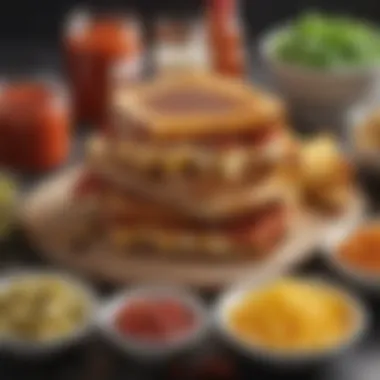
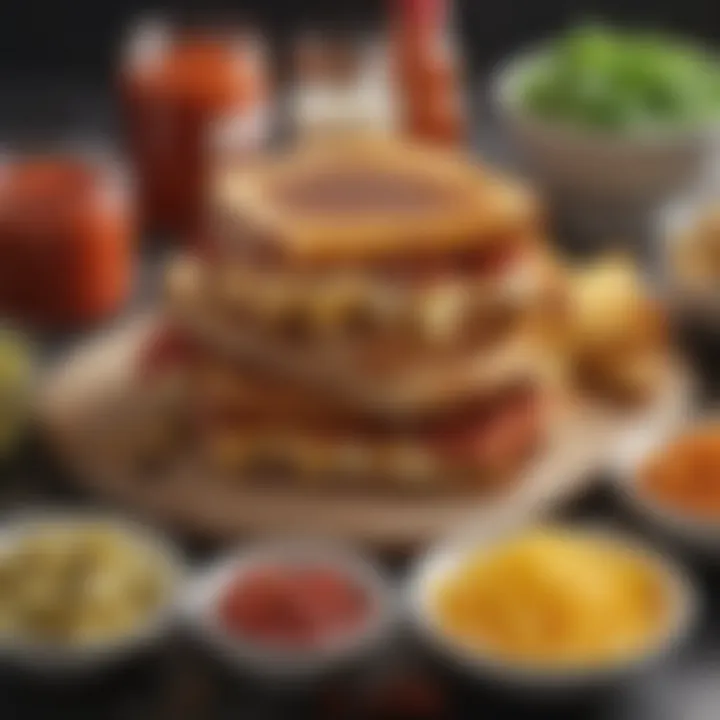
Incorporating these techniques will not only elevate your grilled cheese game but also allow you to enjoy the cooking process itself. A well-prepared sandwich beckons its eater as soon as it’s done. Knowing the importance of cooking techniques is what makes home cooking a joyful pursuit.
Serving Suggestions
Serving suggestions are not just a matter of aesthetics; they can significantly elevate the experience of enjoying a grilled cheese sandwich. Consider how the right accompaniments can transform a simple meal into something memorable. Pairing grilled cheese with complementary flavors adds layers of enjoyment. Think about contrast — the rich gooeyness of cheese meets the light, broth-like quality of soup, or the refreshing crunch of a salad. These pairings enhance the flavor profile, making each bite of your sandwich more exciting.
Pairing with Soups and Sides
One classic pairing with grilled cheese is soup, especially tomato soup. This combination sparks nostalgia for many and speaks to the heart of comfort food. The acidity and light sweetness of tomato soup cuts through the richness of melted cheese, balancing the palate. Likewise, creamy soups like butternut squash or potato leek can also work wonders. Their smooth textures and flavors can underscore the sandwich’s crustiness and cheesy interior.
For those seeking something a bit more adventurous or healthy, consider a refreshing green salad. Tossed with lemon vinaigrette, the salad offers a zingy contrast that works beautifully with a hearty grilled cheese. Adding elements like toasted nuts or seeds can infuse texture and depth.
Garnishing for Presentation
Garnishing isn’t merely about the looks; it also introduces tantalizing flavors and textures.
Fresh Herbs
Fresh herbs bring an aromatic lift that can change the game for grilled cheese. A few sprigs of basil, parsley, or thyme sprinkled over the top adds a splash of color and a fresh note that contrasts with the rich cheese. Their bright flavors are particularly effective when combined with cheeses like mozzarella or ricotta, enhancing the experience without overwhelming it. A key characteristic of fresh herbs is their ability to invigorate a dish, making them a popular choice. However, using too much can overshadow the sandwich’s essence, so moderation is key.
Spiced Dips
Spiced dips present another avenue for enhancement, allowing diners to customize their experience. A zesty aioli or tangy chipotle dip can offer different flavor dimensions, taking your grilled cheese encounter to the next level. These dips not only complement the sandwich but also add an interactive element to the meal. They are popular for how they bring a burst of flavor with each bite. One unique feature is that they can skew towards different flavor profiles, from mild to fiery. Just be mindful; an overly spicy dip could overshadow the nuances of the grilled cheese itself, so it's advisable to offer a range of options.
In summary, pairing your grilled cheese with thoughtful sides and garnishes not only enhances the meal but also invites deeper exploration of flavors and textures, ensuring that each bite remains memorable.
Modern Twists on Grilled Cheese
Grilled cheese sandwiches have come a long way from their humble beginnings. As culinary creativity flourishes, more and more people are dabbling in variations that go beyond the typical cheese and bread combo. This section will shed light on why modern twists matter and how they can invigorate this classic dish.
By embracing new flavors, textures, and ingredient combinations, food lovers can turn a simple snack into a gourmet experience. This section maps out some of the popular ways to elevate grilled cheese, ensuring it remains relevant and exciting in today�’s dining scene.
Gourmet Variations
Truffle Oil
Truffle oil is, without doubt, a game changer in the realm of grilled cheese sandwiches. Just a drizzle of this luxurious ingredient can elevate flavors and transform an average bite into something quite special. The distinctive scent and rich taste of truffle oil add depth that can make even basic ingredients shine.
Its key characteristic lies in the earthy and umami notes, which complement a wide variety of cheeses. Truffle oil acts almost as a flavor magnifier, bringing out the best in sharp cheddar or creamy brie. While it is popular among gourmet cooks, there are some considerations to keep in mind. Its potency means that a little goes a long way; too much can easily overwhelm the palate. Thus, using it judiciously helps maintain the balance of textures and flavors within the sandwich.
Truffle oil is not just a fancy addition; it's a way to bring a taste of luxury to a beloved comfort food.
Artisanal Cheeses
Artisanal cheeses play a crucial role in the modern grilled cheese landscape. These cheeses are crafted with care, often sourced from local dairies or small-scale producers. They offer a wide range of flavors and textures that mass-produced cheeses simply can’t replicate. Think of luscious goat cheese or a tangy blue cheese – each bite tells a story of its origin.
What makes artisanal cheeses particularly appealing is their uniqueness. Each type brings its own characteristics, which can transform the overall flavor profile of the sandwich. Additionally, some artisanal cheeses melt beautifully, creating that gooey texture we all crave. However, one must consider that these cheeses can sometimes be pricier and may not always be accessible at local grocery stores. Careful selection is key; not every artisanal cheese will melt in the same way or work harmoniously with other ingredients.
Health-Conscious Alternatives
In today’s world, health-conscious eating is gaining traction. Luckily, there are ways to enjoy grilled cheese without compromising on nutrition. Substitutes for conventional white bread include whole grain or gluten-free options, which provide more fiber and nutrients, making it a more nourishing meal.
For cheese, lower-fat varieties or vegan cheese options can offer a lighter alternative while still delivering on taste. Incorporating fresh vegetables or even beans adds not just flavor but also additional vitamins and minerals, ensuring that your grilled cheese is satisfying and healthful.
Exploring these alternatives doesn’t mean sacrificing flavor; rather, it encourages creativity and experimentation in the kitchen. As grilled cheese sandwiches evolve with modern palates, they can beautifully adapt to fit diverse dietary preferences with no loss in enjoyment.
End
In the grand tapestry of culinary delights, the grilled cheese sandwich holds a special place. It serves not just as a meal but as a canvas for creativity and personal expression. When we look back at the various components discussed—ranging from ingredients to cooking methods—it becomes clear that this dish is more than the sum of its parts. The key to crafting a perfect grilled cheese isn't solely based on consistency or technique; it’s about the interplay of flavors and textures that can elevate the dining experience.
Reflection on the Versatility of Grilled Cheese
The beauty of grilled cheese lies in its adaptability. You can tailor it to fit your mood or dietary preferences. Whether you're in the mood for something classic with sharp cheddar or looking to experiment with a Mediterranean twist using feta and spinach, the possibilities are endless. This versatility doesn't just satisfy the palate; it invites culinary exploration.
"Grilled cheese is not just for kids; it's a gateway to innovative flavors that challenge traditional boundaries."
When it comes to cultural variations, from the French croque monsieur to the Mexican quesadilla, grilling cheese has become a universal comfort food across the globe. Each variant carries with it a story, a taste of its heritage that adds to the sandwich’s rich history. This adaptability allows for a personal touch, letting cooks express who they are and where they come from through their food choices. In essence, grilled cheese can mirror the diversity of the world around us, making it a cherished favorite among food lovers of all ages.
Encouragement to Experiment
As we wrap up this culinary exploration, consider this your invitation to step away from the standard recipe. While there's a certain joy in making a simple grilled cheese, the challenge of experimentation can yield surprisingly delightful results. Try using different cheeses, perhaps a robust blue cheese paired with caramelized onions, or introduce unexpected elements like a touch of pesto or sriracha for that kick.
Developing your version of a grilled cheese sandwich is about embracing the possibility of happy accidents in the kitchen. Each attempt can uncover new flavors or techniques that haven’t crossed your mind yet. Remember, cooking is not just about following a recipe—it’s about discovering what pleases your taste buds.
So don’t just stick to the tried and true; let this classic dish inspire you. Take the leap into creativity and bring your unique flair to the table. Who knows? Your inventive concoction might just be the next big thing in grilled cheese!







